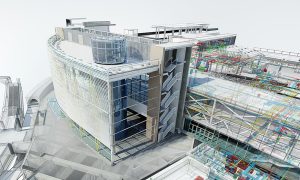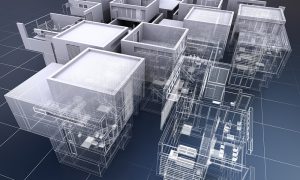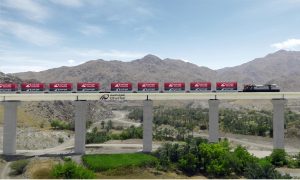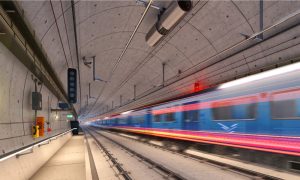Value Engineering Summit: A look at the horizon with Autodesk
Middle East Consultant speaks to Autodesk’s Suhail Arfath about the adoption of technology by the regional construction industry

Middle East Consultant speaks to Autodesk’s Suhail Arfath about the adoption of technology by the regional construction industry and the benefits current and future solutions can bring to the table for project stakeholders.
The construction industry is notoriously resistant when it comes to investing and integrating technology into workflows. Are attitudes across GCC countries changing now or is there still hesitation from the industry? What’s driving this in your opinion?
I believe the Middle East has been habitually open to explore new technologies but the tight project deadlines have always defied the faster adoption. However, now the world has changed, and new norms and challenges are at the play; stakeholders of the industry understand that innovation and technology are crucial to survive and win, driving the complete behavioral and approach change from the board room to the site trailer.
What are the stumbling blocks for consultants/contractors when it comes to investing into new software/technology? How can this be overcome?
Often the reason for companies to delay investing and adopting the new technologies has been the fear of change and the organisation’s agility and readiness for change. Organisations that are leading the industry always have their eyes on long term horizons and are the ones who invest in technology before they become a norm for the rest. Change is an integral part of the organisation’s mindset.
According to a report by the McKinsey Global Institute in 2017, digital transformation could result in ~15% productivity gains and cost reductions of ~6%. In today’s environment of rapidly changing objectives and constraints, these savings can play a vital role in driving the change in the mindset and helping businesses to be resilient in the future. In a nutshell, investing in technologies to drive automation, collaboration and safety is no longer a matter of choice but a necessity to stay in business and improve their margins.
Due to the impact of COVID-19 on global markets, clients/developers have reduced project budgets, which has had a knock-on effect on the supply chain. Consultants and contractors are now looking for ways to offer extra value, reduce time/costs, while trying to maintain margins. What can BIM and other technology bring to the table in this regard, in terms of the design and delivery process of construction projects?
These are unprecedented times but modern technologies like BIM, reality capture, computational design, industrial construction have come a long way in the past decade. Most of the significant infrastructure projects in the region like Expo 2020 and Dubai Metro have already had BIM as an integral part of the design, construction, and even in several cases handover workflows.
Let’s remind ourselves of why people use BIM – both those using BIM and those in the process of adoption recognise that BIM increases transparency, collaboration, and coordination, thus bringing in cost efficiencies and speeding up the delivery. BIM not only allows project stakeholders to work more efficiently but enables them to capture the data they create during the process, which benefits operations and maintenance activities, resulting in savings for the asset owners as well.
Until a vaccine/cure is found for COVID-19, social distancing will be a requirement on project sites, as well as in consultant/contractor offices. Can the design and delivery of projects be significantly automated to the point where there are minimal people needed in proximity to each other? If not, how far is the industry from this happening?
Not long ago, we used to say the future is all about automation. However, I believe that the future is now. Automation is going to be the key to how we design, build and deliver the construction projects in the coming years. According to Global Infrastructure Hub, the need to meet the global demand for infrastructure will rise to $94tn by 2040, and there is a gap of $15tn and annual spending needs to rise 3.5% from 3% of global domestic product.
Besides the deficit needed to get shovels into the ground, automation in design and build workflows will step up to increase efficiencies, save time and money, and aid in the sustainability of projects. Let me share the example of BLOX; the company uses manufacturing technologies to rapidly build acute-care medical facilities in states throughout the US – by fabricating building components in a factory, shipping them to the jobsite, and assembling them in place. With a flexible, integrated cycle of design, manufacture, and construct, BLOX’s approach to modular hospital construction serves as a model for adding capacity to a stressed health-care system.
The company has developed a design for a 16-bed MICU ward that can be manufactured as modular units at the plant, transported by truck, assembled on-site and ready for patients a week later.
Software and data analytics have been the key to developing a DMC operation. BLOX is a longtime user of BIM/Revit to design its building components. The next step was to integrate the digital designs with the manufacturing process on the factory floor via a cloud-based data-management system. They have developed a platform called WEVR that uses our own software development with Autodesk Forge and BIM 360.
What technology is on the horizon that could be a game-changer for the industry in terms of value offered (time/cost saving and improving overall efficiency)?
There are quite a few of them, let us take a look at a couple such as generative design and cloud collaboration.
Generative Design (GD): Now that we are seeing more and more AEC industry design colleagues returning to the workplace, design decisions take on new significance. From meeting the social distancing norms to rethinking the new use cases of the infrastructure, the better data informs better decision making. With powerful technology like generative design, the firms can make more informed design decisions and reimagine design.
GD is a collaborative design process between humans and computers. Here, the designer defines the design parameters and the computer produces design alternatives, evaluates them against quantifiable goals set by the designer, improves the studies by using results from previous ones and feedback from the designer, and ranks the results based on how well they achieve the designer’s original goals.
Symmetrical collaboration in the cloud: The construction industry is on a rapid trajectory of transformation for the last decade and COVID-19 is accelerating this transformation and change like never before. Cloud-based technologies have been instrumental in helping AEC firms enable remote working in these challenging times. A cloud-based common data environment connects data and processes from design through construction and operations. It empowers field staff to anticipate and act, and back-office team to manage all aspects of construction performance. For instance, on using a cloud-based BIM 360 platform, BAM Ireland saw a 20% reduction in quality and safety issues on projects. Consequently, their staff was able to spend 25% more time focusing on the high-risk issues for both quality and safety, as quoted by their digital construction operations manager.
New materials are increasingly being developed/studied for use in construction projects such as self-healing concrete, pollution absorbing bricks etc. Could these materials be the answer to cost, efficiency and sustainability targets?
As we continue to see the industry lines blurring between manufacturing and construction and more significant portions of the infrastructure projects going to offsite and or industrial construction, we will see more and more new and emerging materials being used. Both, the new materials and methods to make and build are certainly going to help the industry to reduce waste and reduce cost, while meeting sustainability targets.
As a technology vendor with clients across the GCC, what do your clients frequently cite as pain points that they would like to solve through the rollout and use of technology?
The following are the common ones across the industry stakeholders: help improve predictability, productivity, and profitability; make better design decisions, improve building performance and collaborate more effectively throughout the project lifecycle; enhance planning, design and delivery of more scalable and sustainable infrastructure; reduce risk.
What does your firm do in terms of outreach towards the construction industry? How do you encourage new ways of thinking and the adoption of new technology to transform the design and delivery process of construction projects?
As Autodesk keeps a close eye on the impact coronavirus (COVID-19) is having on our industry, we’re continuing to explore the best ways we can support our customers, flex to meet their changing needs, and minimise disruptions to their business during this time.
We have the tools and expertise to help the AEC industry remain productive with remote and hybrid work arrangements, as well as equip firms with data-backed insight, as they help their clients respond to new regulations that require shifting design and construction requirements.
During this time, we are committed to providing resources and training that allow our customers to take advantage of our current product features that allow them to offer new services to their clients that help them address design and construction challenges around COVID-19.






















